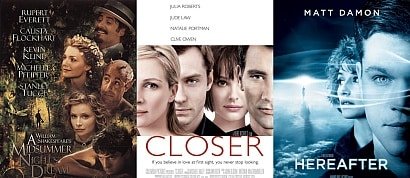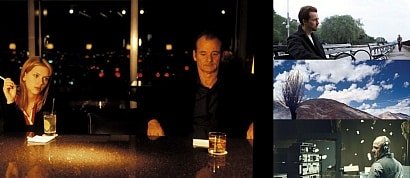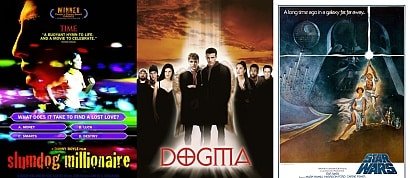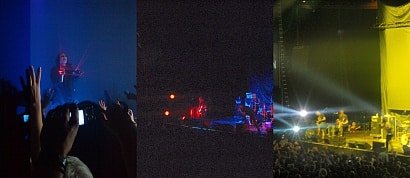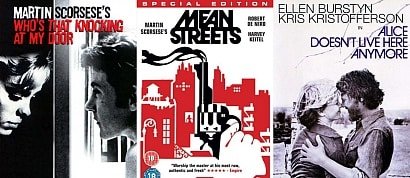The overwhelming sense of anticipation and excitement towards 1999's Star Wars: Episode I - The Phantom Menace was omnipresent leading up to the movie's release, with the world finally welcoming a new Star Wars movie for the first time since Return of the Jedi in 1983. But with a far more out-of-touch George Lucas presiding over the prequel with a team of powerless Yes Men, The Phantom Menace remains one of cinema's biggest disappointments, a flaccid science fiction space opera which neglects everything that made its predecessors so successful in the first place. Admittedly, from a visual perspective, The Phantom Menace does have its upsides, with state-of-the-art CGI, eye-catching production design, and a few thrills. However, the film has nothing going for it below the surface, lacking three-dimensional characters and even a real protagonist. Even if the critics were surprisingly positive towards The Phantom Menace back in 1999, time has not been kind to this entry in the Star Wars franchise, and the general perception among movie-goers and critics has become overwhelmingly negative for good reason.
The Trade Federation, headed by Viceroy Nute Gunray (Silas Carson), has blocked trade paths to the planet of Naboo with a fleet of battleships. Jedi Master Qui-Gon Jinn (Liam Neeson) and his apprentice Obi-Wan Kenobi (Ewan McGregor) are dispatched to negotiate with the Trade Federation leadership, but Darth Sidious (Ian McDiarmid) - who is secretly pulling the strings - wants no part of the negotiations. Qui-Gon and Obi-Wan uncover a plan to invade Naboo, and return to the planet to warn the senate, whereupon they meet Gungan outcast Jar Jar Binks (Ahmed Best). Naboo's young ruler, Queen Amidala (Natalie Portman), is in danger, prompting the pair of Jedi Knights to serve as her protectors. En route to Coruscant, the Queen's ship is forced to land on the desert planet of Tatooine for repairs. On the planet, Qui-Gon meets young slave Anakin Skywalker (Jake Lloyd), and immediately senses that the Force is with him. Feeling that Anakin is destined to become a powerful Jedi, Qui-Gon whisks the 9-year-old boy away from his slave life, though the Jedi Counsel feels that something about Anakin is a bit off.
The fundamental story and screenplay issues at the core of The Phantom Menace have already been emphatically highlighted by the infamous 70-minute video review courtesy of Red Letter Media, making this review borderline pointless. Suffice it to say, though, it's difficult to defend Lucas' detrimentally elementary writing - The Phantom Menace plays out like the first draft of a script in need of a big overhaul. Looking back at the original Star Wars trilogy, it was by no means complex, adhering to a standard Joseph Campbell Hero's Journey template, while Lucas also took inspiration from Akira Kurosawa's The Hidden Fortress. But for whatever reason, The Phantom Menace wastes far too much time on political nonsense which never generates as much traction or momentum as it should. The attempt at introducing a degree of complexity is appreciated in theory, but it's disastrous in practise, leading to severe pacing issues that Lucas simply is not talented enough to overcome. Ultimately, the mix of humdrum political machinations and juvenile toilet humour creates a jarring dissonance that's overwhelming.
Filmmaking should be a collaborative process. After all, the original trilogy was not all Lucas, as other creative individuals were involved that helped shape the movies in a considerable way. Hell, Lucas didn't even write or direct The Empire Strikes Back or Return of the Jedi. But The Phantom Menace sees Lucas working with a blank cheque to fulfil his vision, writing and directing despite not being overly talented in either department, not allowing any potentially valuable third party input. There's no other way to cut it: The Phantom Menace is littered with dismal dialogue, forgettable characters, vague plot machinations, illogical character actions and absurd contrivances, with Lucas shoving as many references and connections to the original trilogy as possible, logic be damned. The rules and laws governing the movie perpetually change at Lucas' convenience, too. Moreover, the idea that "midi-chlorians" in the blood give Jedi Knights their power contradicts the original trilogy. And that's to say nothing of the often idiotic characters, with the circumstances of a late villain death sure to provoke unintentional laughter. Also, who else is disturbed that the future Darth Vader - one of the most badass screen villains in history - is nicknamed "Annie"?
Action sequences are The Phantom Menace's bread and butter, and the film does contain a few exciting, colourful set-pieces, as to be expected. At times, the movie does come to life, and less finicky viewers will probably enjoy the lightsaber duels and spaceship battles, especially with the competent sound and production design. Whereas the subsequent prequels progressively relied more and more on CGI, The Phantom Menace does contain a fair amount of practical effects, with location filming and miniature cities, while the 35mm cinematography does give the movie a more agreeable look than Attack of the Clones or Revenge of the Sith. Even better is John Williams' reliably majestic score, which sounds very much in line with his contributions to the original trilogy. However, the movie's cinematic illusion never quite gets there, with the visuals looking too artificial rather than tangible. The heavy use of CGI characters as opposed to elaborate make-up doesn't help, while Lucas is content to clutter shots with digital creatures and vehicles. With shots often too busy, it proves to be a distraction. Even the space battles look less impressive than those in the original trilogy, with the digital ships lacking the tangibility of practical models.
At the end of the day, the excessive visual pizzazz simply cannot compensate for the dire shortage of tension, and, most critically, heart. The original Star Wars trilogy did not feature fast, heavily-choreographed lightsaber battles, compensating for the lack of impressive acrobatics by ensuring each duel meant something. Ultimately, the emotionally-charged conflicts from The Empire Strikes Back and Return of the Jedi make far more of an impact than the hollow fights in The Phantom Menace. Lucas does try to inject some emotion late into the proceedings with a (predictable) character death, but it's hard to feel anything, especially with movie cutting between so many other battles, creating a narrative discord which perpetually keeps us at arm's length.
Another major drawback is the cast, with none of the actors able to enliven Lucas' often terrible dialogue. This is the role that prompted young Jake Lloyd to give up acting, and though it does seem mean-spirited to keep criticising him, he really is a liability as Anakin. Although a cute kid, his performance is forced, and it always seems like he's acting, which takes us out of the action. Especially with Lloyd forced to act in front of green screen and CGI characters, a tough call even for a veteran actor, he just comes off stiff and unconvincing. Equally slipshod are the more better-known members of the cast, with Neeson a thoroughly uninvolving Qui-Gon, while McGregor is a blank slate, showing none of the gravitas or passion he displayed in Trainspotting just a few years prior. We do not learn much about their thinly-written characters, and they recite lines without any feeling. Meanwhile, the likes of Portman and even a misused Samuel L. Jackson fail to make a positive impression, though this is likely Lucas' fault. I mean, Portman was sensational in Leon: The Professional and has proven acting chops, making her wooden performance here a real head-scratcher.
As with all the Star Wars movies, changes were made to the movie for its Blu-ray release, with Lucas most noticeably choosing to replace puppet Yoda with a CGI model. It's an unnecessary change that's not even done well - the practical puppet looks far more real.
Divorced from the heightened expectations of 1999, The Phantom Menace looks worse than ever, and it's hard to find much merit in Lucas' tremendous misfire. The first Star Wars movie was a massive gamble back in the 1970s, therefore everybody had something to prove and strived to deliver the best possible product. But with The Phantom Menace, the core audience was in place and the movie was always going to be insanely profitable, taking away any incentive for Lucas to put any effort into the screenplay. The target audience of children will be bored by the tedious politics, while adults will be alienated by the irritating antics of Jar Jar Binks, and the fundamental story problems which make the picture impossible to fully embrace despite some impressive visuals. It's an undeniable and frankly sad fact that Star Wars fandom was far purer prior to the release of The Phantom Menace, and the prequel trilogy in general, which forever divided the Jedi Nation.
Even in 2015, The Phantom Menace still hurts.
4.0/10
 Login
Login





